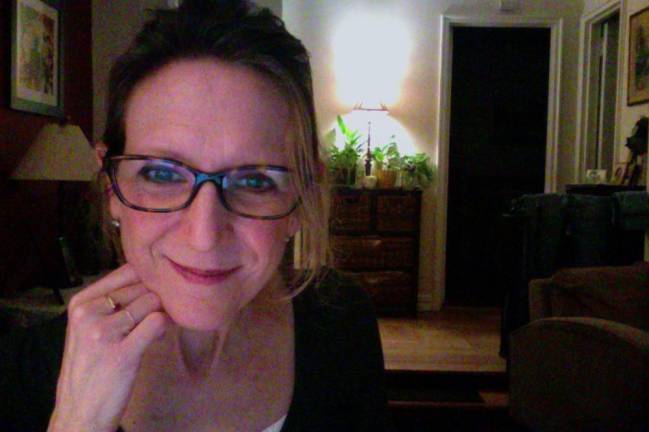Masks, Young Children and Learning
An educator talks about the effects of new NYC policy changes on “social relatedness”

As the city opens back up (again), Mayor Eric Adams is at the helm of those eager to ditch masks and mandates, declaring in a recent Times Square press briefing that “New York City is back ... the fight may not be over, but we’re clearly winning.” As of March 7, masking and proof of vaccination became optional for most indoor venues, including schools, throughout New York City.
For many, this change could not come too soon as they jump at the chance to literally breathe freely again, after a full two years of pandemic-related restrictions.
Others though, aren’t so sure. In subsequent local news broadcasts of interviews of passers-by in some of New York City’s busy intersections, some residents say they are not quite ready to give up masks just yet – saying they will adopt a “wait and see” mindset as the city enters this next phase.
For New York City public schools, masks will no longer be required for students in kindergarten through 12th grade, both at play and in the classrooms. Masks will continue to be required for children under five years, as they are not yet eligible for vaccines. And, as have been the practice since the beginning of the pandemic, many private schools also consider the city and state’s updated recommendations in creating new policies for their school community.
Adams emphasized the “optional” for school children wearing masks and warned against other students making an issue of those who still choose to do so. He also announced that other COVID mandates such as the requirement for all employees to be vaccinated, or have an exemption, to return to work are still in effect.
We spoke with Colleen Goddard, Ph.D., an expert in early childhood development and a practitioner, consultant and college professor with over 22 years of experience, about the pandemic’s impact on young children, and the city’s recent policy changes.
The mayor has made masks optional for schools, including for 5-year-olds who are not vaccinated. What is your view on this?
At the school where I work, masks are optional for students, teachers, and staff in kindergarten classrooms and above. However, it is important to note that some families of children K and above have elected to have their children continue to wear masks, which I interpret to suggest that broad mandates for all may not necessarily be experienced as supportive for individual children and families. Mandates speak to public health policies, when COVID itself has had far more personal and profound implications.
I personally hold various perspectives – one, from a deeply empathetic stance, I feel that masks should be worn as long as deaths still occur, and vaccines are not available for our youngest citizens. Infections can and do occur and secondary, more serious, health implications have been documented for very young children. Why rush the risk/reward balance? Why not, instead, implement a well-balanced, transitional time aligned with science and data.
As educators, we will address the developmental concerns and worries – we know how to do that – but human life is incredibly precious and should be recognized as such.
What have you observed in the population of children you serve and the pandemic’s impact on their overall wellbeing?
In terms of very young children, I have observed some significant challenges, particularly related to physical, social-emotional and language/linguistic development. Physicality for our youngest children has been halted in some respects as they did not have access to playgrounds, and movement activities that promoted and supported gross and fine motor development.
In addition, social-emotional delays have been observable in terms of heightened stressful connections and attachments to parents and loved ones, and/or a lack of these same relational bonds if a child had been taken from their parent(s) in order to be quarantined. We can see regression, and the need to revisit and rebuild these ages and stages of development.
How do you think mask-wearing over the last two years has affected children who are now 4 or 5 years old?
There are evident speech and language delays because of mask wearing – both in not being able to “see” the mouth move and create words, sounds and vocalizations and vibrations, but also that the words and sounds are muffled, distorted and changed by the presence of the mask over the mouth and nose. This also impacts “social relatedness” that is rooted in reading and reflecting back “social and facial cues.”
In terms of behavioral challenges – these could manifest across ages and stages of development. Children understand the world in the realm of relationships – not by virtual worlds of both convenience and necessity – but by authentic human experiences, [and] when children don’t experience these opportunities, it is inevitable that a behavioral reaction will be evident.
Going forward, what are your recommendations for those caring for our youngest students?
At this time when fatigue is experienced by so many – compassion fatigue, physical fatigue, coping fatigue and even Zoom fatigue – children, their families, and teachers need the permission, invitation and allowance to create spaces and place, both literal and symbolic, where emotions can be experienced in a safe and non-judgmental way.
Decision-making around health and safety protocols [should] put not only the families and children first, but teachers as well. We all have and hold a COVID story, and we are all – without question – in this together.
Colleen Goddard works as an Early Childhood Specialist at Corlears School for children from 16 months of age to fifth grade in Chelsea, and as an early childhood development consultant and adjunct professor at Brooklyn College.